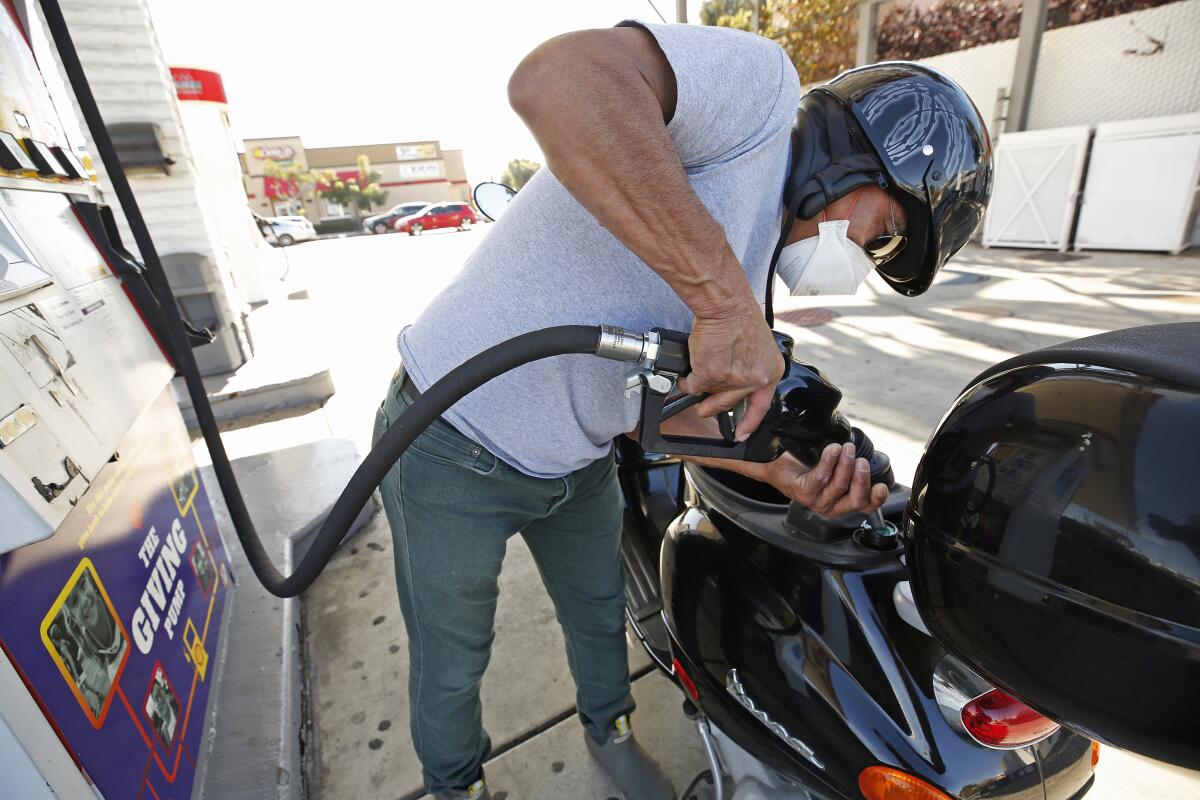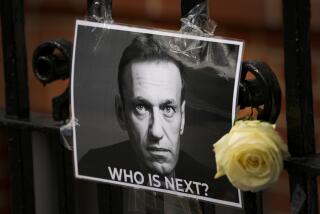Will Russia’s Ukraine invasion push up oil prices and inflation?

WASHINGTON — Whatever the consequences for Russia of the new sanctions that President Biden announced Tuesday, the invasion of Ukraine and ensuing global standoff will further darken the outlook for the U.S. economy.
Russian President Vladimir Putin’s decision to employ a so-called salami military tactic by sending troops into a slice of Ukraine only adds to the uncertainty for global and American economies still recovering from the COVID-19 pandemic.
The conflict is likely to push up oil prices, at least in the very near term, adding to the already worrisome level of inflation.
It remains to be seen how much pain the new U.S. sanctions targeting Russian banks and individuals will inflict on the Russian economy. Some analysts viewed them as relatively modest and not nearly strong enough to deter further incursions by Putin.
Earlier Tuesday, Germany moved to halt approval of a key gas pipeline with Russia, which is seen as potentially more costly for the Kremlin if the stoppage is permanent.
And if Putin expands military action, Biden said he and U.S. allies were prepared to fire more sanction arrows in their quiver, which include blocking U.S. exports of high technology products and cutting off Russia from the global system that facilitates interbank transactions.
But Russia will not be the only country to feel the pain.
U.S. stock markets were already down sharply before Biden’s announcement. The S&P 500 closed down 1% on Tuesday, putting it 10.7% below its recent high as it entered correction territory.
The Dow Jones industrial average lost 1.4% and is now off more than 9% from its early January high, although it’s still up about 10% from a year ago.
“We don’t know where we’re going. It’s the uncertainty that’s hard,” said Diane Swonk, chief economist at Grant Thornton in Chicago.
Economically, one major hot spot is the price of oil, which is already at an eight-year high. It’s not yet clear how big an impact the sanctions or a wider Russian incursion into Ukraine would have on crude prices, but it’s not likely to pull them down anytime soon.
And that means potentially higher prices for American consumers at the gas pump and for heating oil and natural gas — which economists fear could push inflation into double digits and raise expectations of high prices for months and years to come.
Even before the latest crisis, the Federal Reserve was poised to raise interest rates to combat surging inflation that, by some measures, has helped make consumers feel as gloomy as they did during the Great Recession of 2008-09.
Investors have been jumpy for days. While the Omicron variant of the coronavirus has eased and U.S. labor markets have been resilient, the standoff with Russia has amplified worries about a slowdown in a world economy struggling with snarled supply chains and high inflation.
For companies, rising costs for commodities and higher wages will cut into profits. And it’s not just investors and wealthy Americans who are feeling the squeeze.
About half of U.S. households own stocks in one form or another, and more declines could further depress consumer sentiment and restrain spending and growth.
Russia itself isn’t a big player in the global economy; it’s not even in the top 10 of the world’s largest economies. U.S.-Russia trade in 2020 amounted to about $24 billion — less than 5% of America’s exchange of goods with China.
But Russia has an outsized role in global energy markets. It’s the third-largest producer of oil, after the U.S. and Saudi Arabia, supplying about 10% of what’s consumed worldwide. Much of that goes to Europe, which is especially dependent on Russia for gas.
Global petroleum prices were rising even before the Russia-Ukraine crisis, with supplies insufficient to keep up with stronger-than-expected demand from economies recovering from COVID-19. But the specter of war in Ukraine and disruptions to the flow of gas and oil from Russia sent prices surging higher in recent days.
Since Biden’s statement Friday that Russia would invade Ukraine in coming days, the world’s benchmark crude price has jumped as much as 9% to nearly $100 a barrel.
For American consumers, the jump in what they’re paying at gas stations — an average of $3.58 per gallon nationwide as of mid-February, up $1.04 from a year earlier — has added to the distress of higher prices that have spread broadly to many goods, including staple food items.
The consumer inflation rate surged to 7.5% last month compared with a year earlier, well above the 5.7% average wage gain for most workers in the same 12-month period.
Higher energy costs are a big part of the inflation story. The good news is that more oil production and supplies are coming online, including from shale producers in the U.S., said Amy Myers Jaffe, research professor at the Fletcher School at Tufts University.
What worries Jaffe is a repeat of the boom-and-bust cycles of oil markets and the broader economy:
“Throughout the history of the oil world, you have the geopolitical conflict. It brings an unbelievable height to the price of oil over and over again, and it’s always followed by an economic crisis that brings a collapse in the price of oil,” she said.
Even with a limited conflict in Ukraine, analysts worry that the rising oil prices are straining poorer developing countries and that Russian cyberattacks could exacerbate problems with global supply chains that already have helped fuel higher inflation.
Joseph Brusuelas, chief economist at the accounting firm RSM, sees oil prices climbing an additional 20% in the event of a full-fledged invasion by Putin. In the worst-case scenario, he said, it’ll shoot up 40% and knock the economy into recession.
“It is the American middle and working classes that will bear the burden of adjustment caused by another European war,” he said, adding that it would then make sense for U.S. policymakers to revive the child tax credit and consider broader stimulus measures.
In the meantime, the Fed is preparing to make the first of several expected interest rate hikes starting next month, while also reducing the amount of money in the economy, to curb inflation.
Russia, however, has complicated that game plan.
For now, the Fed seems intent on applying the economic brakes in the face of a tight labor market, with rapidly rising earnings threatening a wage price spiral. But there’s increasing risk of slowing growth amid uncertainties about future spending even as the pandemic has receded once again.
“All the global central banks are going to be in a terrible situation,” Brusuelas said.
Biden has spoken sympathetically of families struggling with inflation, and he and other Democrats have blasted market concentration in industries as culprits.
He is likely to release more U.S. petroleum reserves and could also suspend the national fuel tax. But that’s likely to provide small relief. And beyond that his options are limited.
More to Read
Get the L.A. Times Politics newsletter
Deeply reported insights into legislation, politics and policy from Sacramento, Washington and beyond. In your inbox three times per week.
You may occasionally receive promotional content from the Los Angeles Times.











